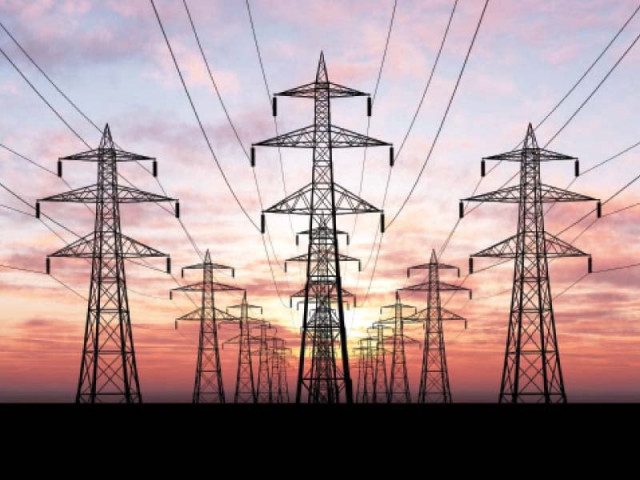CASA-1000 project terms may be renegotiated
Energy export price can be set at more reasonable 3 US cents per kWh

With the emergence of Taliban in Afghanistan and prospective peace and stability, the prospects of energy corridor projects like CASA-1000 and TAPI gas pipeline appear to be brighter than ever.
CASA-1000 is a power transmission project from Tajikistan and Kyrgyzstan passing through Afghanistan to Pakistan. TAPI is a gas pipeline project designed to import gas from Turkmenistan.
While we need gas, we are beset by the problem of excess capacity, of which more is to come in the next 10 years. Projections are that the worse has yet to come for the circular debt due to the excessive committed projects. Consequently, intensive criticism is emerging against CASA-1000, although nothing can be done now, as the project is under an advanced stage of implementation. Perhaps, some renegotiation of terms may be possible, which we would like to explore in the following.
CASA-1000 was conceived much earlier in the year 2010 when Pakistan was suffering from a power crisis and very little options were available. However, the CASA-1000 agreement was signed in 2015 when there were clear signals of major CPEC investment in the power sector under which projects of 20,000 megawatts would be installed. CASA-1000 has been designed to carry 1,000-1,300MW (4,000 gigawatt-hours - GWh) of electricity in summer months when there is surplus in the exporting countries of Tajikistan and Kyrgyzstan.
In these countries, the summer demand is low and hydroelectric power production is high, while in Pakistan the summer demand is high. This was the rationale for CASA-1000 project, although ill-timed. The World Bank has masterminded and financed this project. However, Pakistan has been burdened with additional expenditure on installing a converter station, which should have been part of the transmission project’s capital expenditure (capex). This cost penalty stands at $240 million, which is 20% of the project cost. The tariff agreed and approved by Nepra is 9.4 US cents. It is a take-or-pay project.
In the context of excess capacity already installed in Pakistan and low growth prospects under Covid, the potential utilisation of electricity under CASA-1000 appears to be low. If not utilised, its cost penalty under take-or-pay will be Rs36 billion per year and Rs360 billion over the next 10 years. This may be another source of circular debt.
The electricity price is 5.13 US cents per kilowatt-hour (kWh), to which a transmission charge of 4.3 US cents is added to an aggregate of 9.4 US cents. With the addition of extra NTDC capex charge, the transmission cost will increase. It has been reported that Afghanistan has already been importing electricity from Tajikistan at a price of 3 US cents, which is the only indicator of market price in the region.
Being surplus, it is reasonable to price the regionally traded electricity at 3 US cents. It may be noted that the feasibility estimate was only 1.50 US cents. It indicates the lack of interest of Afghanistan in buying electricity through CASA-1000. Its representative in a CASA-1000 conference organised in Islamabad clearly expressed this.
The overhead cost components are unreasonably high. There is an Afghan transit charge of 1.25 US cents and undefined other charges of 0.50 US cent. Transmission tariff is 2.98 US cents, which is several times higher than the NTDC tariff, which covers more length and power.
In the new circumstances in Afghanistan, we would avoid to criticise high transit charges. If the peace and stability is established, the security component of Afghan transit charge should come down. But it won’t due to Afghanistan’s need for economic support.
Exports from Pakistan
Electricity export possibilities from Pakistan have been indicated. However, the issue is high cost of electricity with the producer price standing at 10 US cents or more. Thermal energy is generally more expensive than hydropower and renewables. Would net metering be feasible? The low-cost producer would benefit from it though.
Would Tajikistan or Kyrgyzstan be ready to buy, price being a separate issue. There is no provision in the agreement for exports from Pakistan. However, this can be a subject of renegotiations, as discussed later. If subsidised export argument is accepted, then there is enough demand and appetite in Pakistan’s industrial sector to benefit from a concessionary tariff. However, the issue is how to reduce the impact of it.
In Pakistan also, there has been public and institutional opposition to this project due to it being ill-timed. The Planning Commission openly opposed it in a Nepra public hearing. Even Jica consultants (who traditionally avoid controversies) opposed the project in their generation plan (IGCEP) study.
Their argument was that Pakistan had abundant hydro resources, which should be utilised. They were right. This is tantamount to passing on investment opportunities in the hydro sector to other countries. In Pakistan, however, there has been a tradition that lenders are not opposed to avoid implications for other borrowing needs. There are abundant examples. The ADB’s smart meter project is a recent instance in the case.
Role of regulator
It may be of interest to examine the role and attitude of Nepra in this respect. Nepra determination for CASA-1000 makes an interesting reading.
It avoided all the relevant questions such as demand and need for the project. Typically, cost components were accepted without due diligence. All objections were left unrecognised. If regulators discharge their responsibilities diligently and courageously, many problems and mistakes can be prevented.
The question is what to do now? What are the possibilities of reducing its potential negative impact on Pakistan’s electricity sector and the economy? Firstly, there may be a possibility of converting it to take-and-pay or its agreed volume is reduced reasonably. The World Bank may be requested to foot the bill.
Secondly, the energy export price may be renegotiated to a more reasonable 3 US cents per kWh. It is hoped that the World Bank will be able to cooperate in this respect.
The writer is former member energy of the Planning Commission and author of several books on the energy sector
Published in The Express Tribune, August 23rd, 2021.
Like Business on Facebook, follow @TribuneBiz on Twitter to stay informed and join in the conversation.



















COMMENTS
Comments are moderated and generally will be posted if they are on-topic and not abusive.
For more information, please see our Comments FAQ